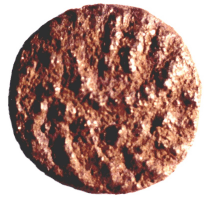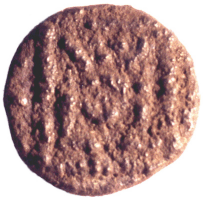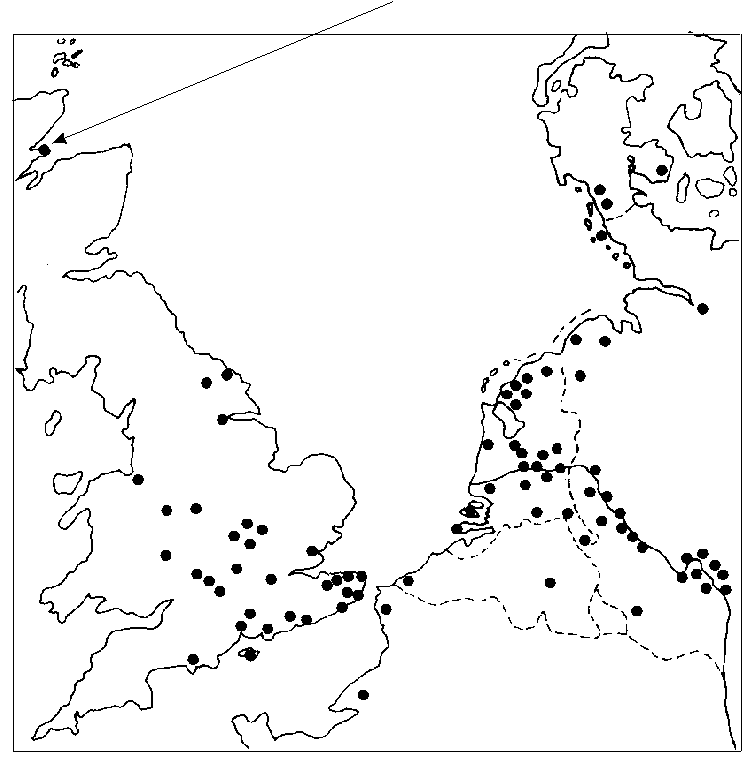 Bulletin
4, 1998
Bulletin
4, 1998
An Eighth-Century Coin from the Glebe Field
Mark Blackburn, Fitzwilliam Museum, Cambridge
The discovery of a small eighth-century coin in the 1998 excavation season has a significance that is far wider than the light it sheds on the settlement at Portmahomack, for it is the most northerly pre-Viking coin from the British Isles (Fig 8).
Throughout the early middle ages Scotland was essentially without coinage - the first coins produced in Scotland were struck for David I (1124-53) - although the Vikings, who were used to using a mixture of silver coin and bullion in Scandinavia, brought this practice to the areas of Norse settlement, principally in the Northern and Western Isles. Before the first chronicled raids on the British Isles starting in 789, only a very few Anglo-Saxon and related coins reached Scotland, and those have all been found south of the Firth of Forth. They form two groups, one from the south-west (Whithorn Priory and nearby Mochrum) and the other the south-east coast( Aberlady and Dunbar). The Tarbat find is, then, a good 220km further north than Dunbar as the crow flies, or more than 300km as one would sail around the coast.
 |
 |
 |
|
Figure 8: Distribution of "porcupine" sceattas around the North Sea (after Hodges 1982)
Significantly, the Tarbat coin was produced not in England, but in the Low Countries. It is of the very plentiful variety of early penny known as the 'Porcupine' type, named after the enigmatic design on the obverse which summons up connotations of quills bristling from a curved back. Within the 'Porcupine' type (Series E), the Tarbat find belongs to the middle phase dated 715-735. Coins of this phase have been found mainly in Frisia and the lower Rhineland, where they are thought to have been made. At least 780 specimens were present in the Kloster Barthe hoard in eastern Frisia and there were some 400 examples among the prolific site finds from Domburg, a port in the Rhine mouth, but they also reached England and Merovingian France in fair numbers.
The interesting question to ponder is, how did this Continental coin reach the Tarbat peninsula? By sea, of course; but was it in a ship plying across the North Sea and up the Scottish coast, or had the coin already reached England and circulated there before moving northwards up the coast? The chances weigh quite strongly in favour of direct shipment, for in England in the 720's Continental coins would have been a minority. The argument is reinforced by the Dunbar find, which was also a Continental issue, in this case of the 'Woden/Monster' type (Series X) from western Denmark. Together these two finds - the most northerly from the British Isles - provide important evidence for contact between eastern Scotland and the Continent 50 years or more before the traditional date for the beginning of the Viking Age.
NEXT: Medieval Pottery
BACK: Stone for Carving
Last updated 10 October, 2003.
Contact the Tarbat Discovery Programme


